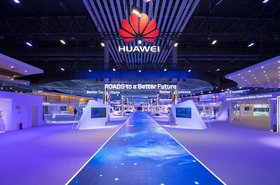China has announced a plan to set up large clusters of data centers outside the main population centers, to provide digital infrastructure without overloading power grids.
The four "mega clusters" in the north and west of the country were announced by the Chinese state's senior planning service this week, according to reports in Reuters and elsewhere.
Build where energy is green
China's National Development and Reform Commission (NDRC) announced approved data center developments in the northern Inner Mongolia region, northwestern Ningxia region, Gansu province and southwestern Guizhou province, all of which have the benefit of strong energy supply and good environmental conditions.
The Commission said large data centers in these locations could be developed in a green and low-carbon fashion, because of locally abundant wind and solar power. This contrasts with developments in the east of the country, which have put pressure on electricity grids
The announcements follow an NDRC directive earlier in December that local municipalities should cease the "blind and disorderly development" of data centers. This said that it was crucial to get power-hungry data centers under control, if China is to have any hope of meeting its target of hitting peak carbon emissions by 2030 and be carbon neutral by 2060, and forbade local goverments from offering independent incentives to build data centers in particular locations.
Local governments have been told "in principle" not to provide incentives to data center companies to build facilities in areas that aren't classified as national hubs by the government - and this week's announcement gives an indication where these hubs will be.
However, with the Ningxia and Gansu regions on the list, this raises questions of how data will be communicated. These zones are 1000km from Beijing, so strong networks will be required and there will be some latency.
Alongside these hubs, in December the province of Guangdong proposed that marine locations should put some data center underwater to gain efficient seawater cooling.
The NDRC is clearly aware that the next hurdle to jump is networking: "Data centers and 5G are... the most critical link when it comes to saving energy and reducing consumption of new infrastructure," the commission said earlier in December.




